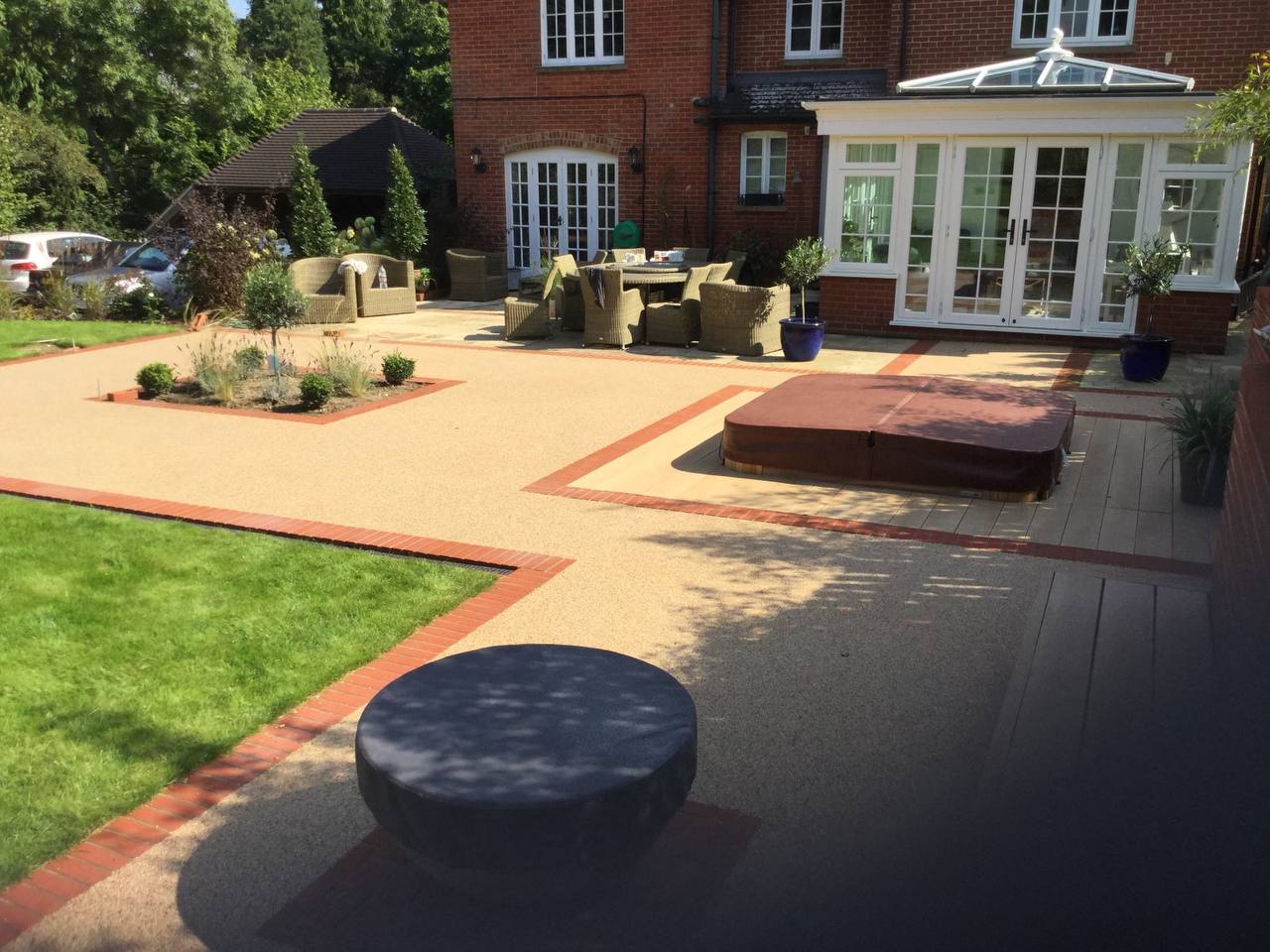How to Deal with Surface Sunken Areas in Block Paving
Block paving is a popular choice for driveways and patios thanks to its strength, versatility, and attractive appearance. However, even the best-laid surfaces can develop uneven patches or sunken areas over time. These dips not only spoil the look of your driveway but can also create drainage problems and trip hazards if left unaddressed. At Brixworth Driveways & Patios, we help homeowners in Brixworth, Northamptonshire restore their block paving to its original level and appearance, ensuring both durability and visual appeal.
Understanding Why Block Paving Sinks
Before repairs can be made, it’s essential to understand why sunken areas form in the first place. Identifying the cause helps prevent the issue from recurring after restoration.
Common Causes of Sunken Block Paving
- Poor Base Preparation: If the sub-base (usually crushed stone or MOT Type 1) wasn’t compacted correctly during installation, the surface can settle unevenly over time.
- Heavy Vehicle Use: Repeated weight from vehicles can compress the bedding layer beneath the blocks, particularly in driveways not designed for high loads.
- Drainage Issues: Standing water can wash away the sand or fine materials supporting the blocks, leading to dips or hollow spots.
- Tree Roots: Nearby roots may displace the sub-base or lift certain areas, causing unevenness elsewhere.
- Erosion or Settlement: Natural ground movement and weather conditions can gradually affect stability, especially in areas with poor soil drainage.
Understanding the underlying cause is the first step towards a long-term solution rather than just a temporary fix.
The Problems Caused by Sunken Paving
Even minor surface dips can lead to several practical and aesthetic problems:
- Water pooling: Rainwater may collect in sunken areas, increasing the risk of erosion and frost damage.
- Weed growth: Standing moisture encourages weeds and moss to grow between blocks.
- Safety hazards: Uneven surfaces create trip risks, especially for pedestrians.
- Reduced kerb appeal: A visibly uneven driveway detracts from the appearance of your property.
Addressing these issues promptly keeps your driveway safe, attractive, and long-lasting.
The Correct Way to Repair Sunken Block Paving
Repairing sunken block paving involves more than simply adding extra sand or lifting a few blocks. It requires proper preparation, levelling, and reinstallation to restore structural integrity.
Step 1: Assess the Area
A professional assessment determines how widespread the problem is and whether it’s localised or symptomatic of deeper structural issues. At Brixworth Driveways & Patios, we carefully inspect the surface and base to decide the best method for repair.
Step 2: Lift and Clean the Blocks
The affected blocks are carefully removed using specialist tools to avoid damaging surrounding areas. Once lifted, each block is cleaned to remove old sand and debris before being reinstalled.
Step 3: Level the Sub-Base
If the sub-base has shifted or eroded, fresh material is added and compacted thoroughly. Proper compaction is vital for ensuring a stable foundation and preventing future sinking.
Step 4: Reinstall the Bedding Layer
A sharp sand layer is evenly spread and compacted to create a smooth, level surface. This bedding layer supports the blocks and ensures even weight distribution across the surface.
Step 5: Relay the Blocks
The cleaned blocks are then carefully replaced in their original pattern, maintaining tight joints. Once fitted, kiln-dried jointing sand is brushed into the gaps to lock them in place.
Step 6: Compact and Finish
Finally, the surface is compacted again to secure the blocks and create a smooth, even finish that blends seamlessly with the surrounding paving.
Preventing Future Sunken Areas
Once repairs are completed, a few maintenance steps can help prevent the problem from reoccurring:
- Regular inspection: Check for signs of movement, dips, or pooling water after heavy rain.
- Proper drainage: Ensure gutters and channels are directing water away from the driveway.
- Avoid overloading: Keep heavy vehicles or skips off areas not designed for high loads.
- Weed control: Remove vegetation early before roots start to disrupt the joints.
- Professional installation: If you’re replacing or extending your driveway, ensure a proper sub-base is installed by experienced specialists like Brixworth Driveways & Patios.
Why Professional Repair Matters
DIY fixes might provide short-term improvement, but without addressing the underlying cause, the problem will likely return. Professional driveway specialists understand how to restore both the appearance and structure of your block paving using the right materials and techniques. At Brixworth Driveways & Patios, we take a thorough approach to every repair, ensuring your driveway looks even, drains properly, and withstands daily use.
The Long-Term Benefits of Restoring Your Driveway
A properly repaired and maintained driveway not only improves safety but also enhances your property’s value and kerb appeal. Regular care prevents costly resurfacing in the future and helps keep your outdoor space looking pristine all year round.
Conclusion
Sunken areas in block paving are a common issue, but they can be effectively resolved with the right expertise and attention to detail. By lifting and relaying the affected sections properly, your driveway can be restored to its original level and strength.
For homeowners in Brixworth, Northamptonshire, Brixworth Driveways & Patios provides professional driveway maintenance and repair services, ensuring smooth, durable, and visually stunning results that stand the test of time.
Call us on: 01604 279 397
Click here to find out more about Brixworth Driveways & Patios
Click here to complete our contact form and see how we can help with your driveways.

